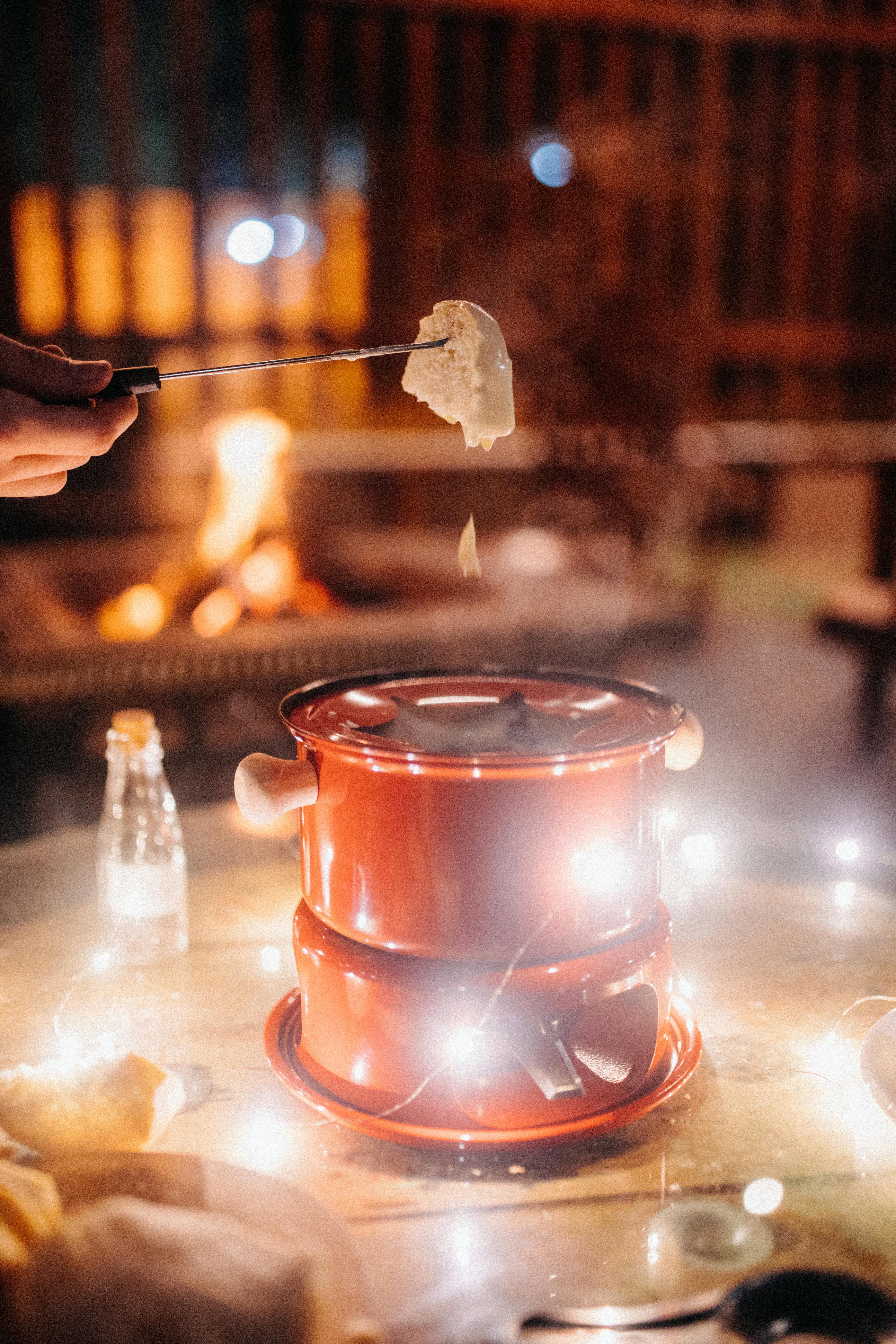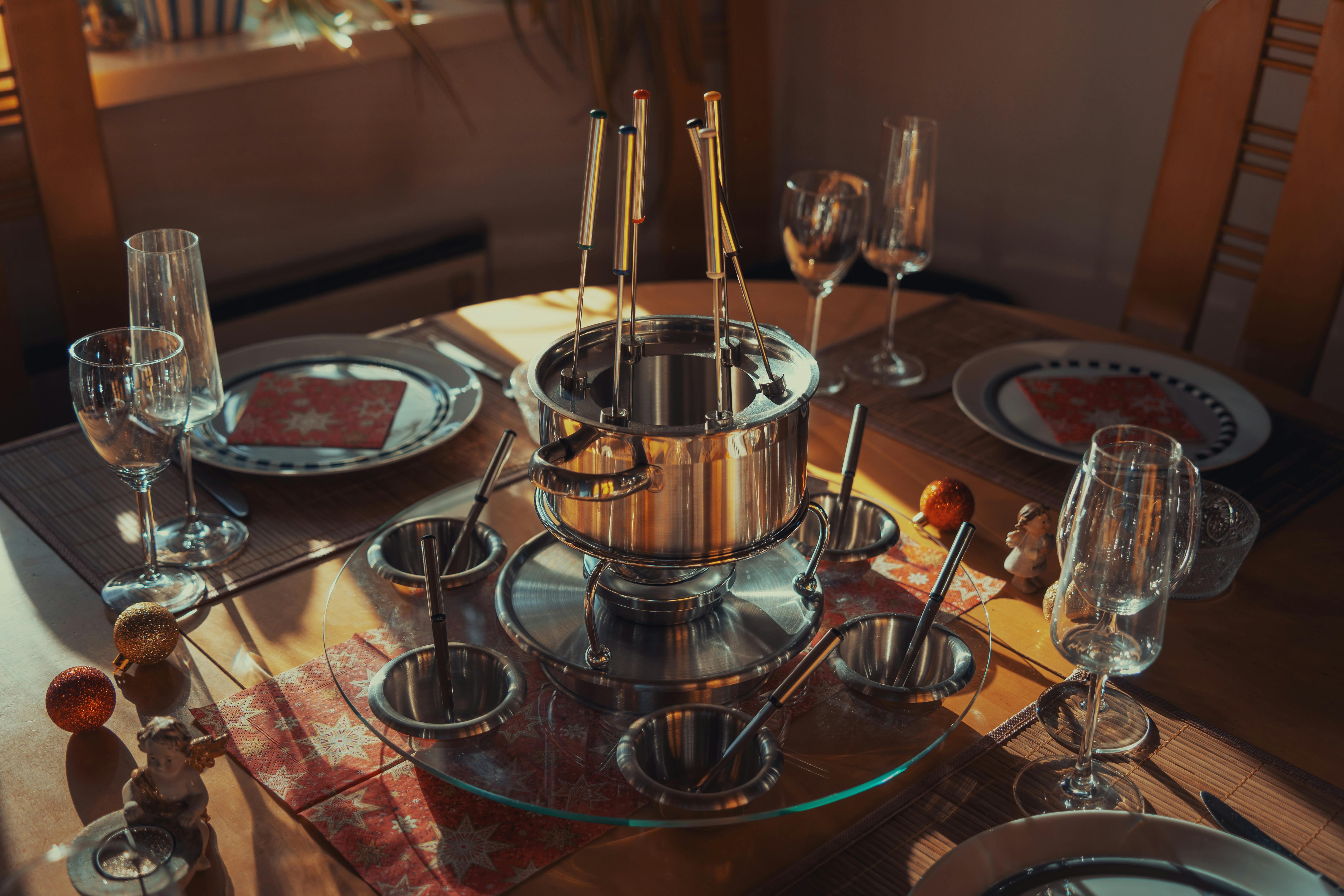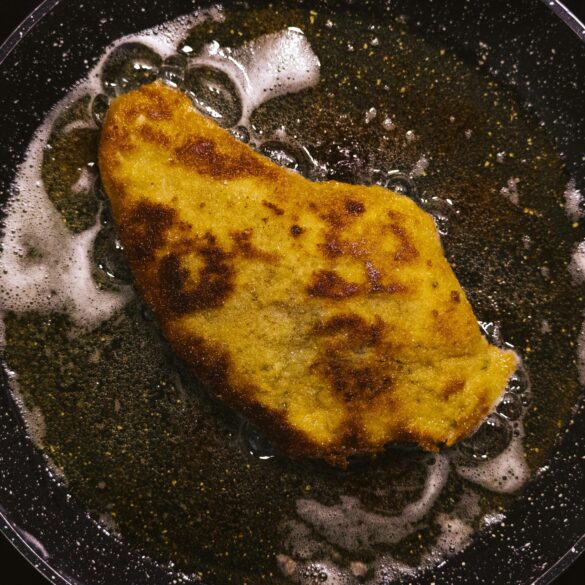Swiss Fondue Chef Secrets: Make Authentic Fondue at Home Easily
Here’s an open secret that doesn’t get enough press: making stunningly authentic Swiss fondue at home—with the precise restaurant texture that seems impossible to replicate in your own kitchen—actually comes down to a handful of small, smart decisions. Some are dead simple, others quite counterintuitive. I should know, because I’ve stood at both ends of the spectrum—first, as a bumbling amateur splattering blobs of grainy cheese mess all over my stove (and ego), and later, as a chef bewildered by old Swiss grannies outperforming my technique using nothing but muscle memory and two locally-sourced cheeses. Let me be completely transparent, the perfect fondue isn’t about fancy gadgets or postcard-worthy mountain chalets. No need to import esoteric ingredients, install an industrial cheese cave, or summon a Swiss nonna (though, admittedly, that does guarantee results every single time). Instead, it’s about understanding a few professional chef secrets—the stuff that’s rarely shared in tourist cookbooks but quietly passed around in bustling Zurich kitchens and tiny village stüblis.
Here’s where it gets interesting. Despite growing up far from the Alps, I have a genuine obsession with Swiss food traditions. My journey into cheese worship started after a 2009 backpacking trip through Lucerne, where I witnessed—literally with cheese dripping off my chin—a rowdy Friday night fondue deep in an old stone-walled tavern. One communal pot, zero airs, lots of laughter. There, a retired chef from Bern said, “It’s not just about the cheese. It’s how you treat it—like a dance partner, not a block of stubborn dairy.” I’ve run with that ever since. But even now, years and dozens of fondues later, I’ve made (and saved) every kind of fondue disaster imaginable. Lumpy. Oily. Rubber bands. Chalk bowls. Soggy bread. I’ve learned that most people—especially outside of Switzerland—get hung up on the wrong details.
The silky, elastic fondue you crave? It’s a chemistry game. Two key tricks: precise cheese blend (not just “Swiss cheese”) and gentle, gradual heat—no cheating with shortcuts or high-flame bravado. I’ll explain the ‘why’ (not just the ‘how’) so you truly own the results.
Introduction: Why Fondue Still Matters (and Always Will)
Why on earth should you care about making perfect Swiss fondue post-pandemic, in a food-obsessed world flooded with TikTok hacks and pressure cooker miracles? Short answer: fondue is the ultimate edible social glue. Whether you’re reconnecting with family, impressing new friends, or honestly just craving a cozy, analog escape from doomscrolling, authentic fondue slows everything down in the best way possible. It’s irresistible comfort food as spectacle and conversation-starter. Also—let’s be blunt—once you’ve tasted real, properly textured fondue (with wine, sharp cheese, serious aroma), going back to bland imitations just feels like admitting defeat. Decades of Swiss tradition, unchanged. I firmly believe anyone can master the technique with the right mindset—and trust me, it gets more fun every time you try.
Swiss Fondue: A Brief Culinary History (And Why That Matters to You)
Okay, so you might be wondering: Is fondue really authentically Swiss—or just a clever bit of marketing? (Truthfully, both.) The dish traces its earliest roots to Swiss peasant foodways, where families found ingenious ways to stretch expensive mountain cheese using wine and stale bread during lean winter months3. But here’s what’s wild—until the mid-20th century, fondue was mostly a regional quirk, not a national identity symbol. The modern fondue craze comes more from savvy promotion by the Swiss Cheese Union in the 1930s, which cleverly branded it as a symbol of unity (think: “melting pot,” literally and metaphorically)4. It quickly captured imaginations far beyond the Alps, showing up in posh restaurants and, eventually, on retro living room tables from New York to Tokyo. The tradition endures for a reason: when executed right, fondue turns humble ingredients into something memorable. What really struck me is how every Swiss region fiercely defends its own style—some use only Gruyère and vacherin; others insist on the spiked “fondue moitié-moitié.” Every family, it seems, has their ritual and their secrets.
“Fondue is far more than just cheese and bread; it is a celebration of conviviality and community that has endured centuries in Switzerland and beyond.”
As someone who’s made fondue alongside Swiss nonnas, New York chefs, and international students learning from scratch, I’ve come to realize: It’s about the process, the patience, and above all, the joy of sharing food that demands you linger, talk, and connect. That spirit? Utterly universal.
Picking the Perfect Cheeses: Inside the Chef Mindset
This is where a lot of beginner cooks falter. I used to think “Swiss cheese” meant those mass-market, bland supermarket slices with giant holes. Actually, let me clarify: for real fondue, you want aged, robust, complex Alpine cheeses. Think Gruyère (nutty, salty), Emmental (subtle, sweet), Appenzeller (notorious for its punchy aroma), or locally made vacherin5. You can play with the ratios, but there’s a strong reason chefs rarely budge from the traditional blends. As a rule of thumb, try:
- Gruyère (50%): For body and depth
- Emmental (30%): For stretch and mildness
- Appenzeller or vacherin (20%): For sharp, grassy flavor
Truth be told, I’ve swapped in local Alpine-style cheeses when desperate (hello, Vermont and French Comté), but nothing quite rivals the Swiss originals. Whenever possible, spring for raw-milk cheese from a trusted cheesemonger. Avoid pre-shredded blends—anti-caking agents genuinely ruin the silkiness. (Trust me, I learned this the hard way—think rubber cement meets string cheese gone rogue.)
Okay, let’s pause here and let all that sink in before moving on. The secret to perfect fondue is just getting started—ditch the fear, embrace the cheese, and let’s keep going.
Do You Really Need a Fondue Pot? Kitchen Gear & Set-Up
I’ll admit, as a rookie I spent weeks obsessively hunting down vintage enameled fondue sets, convinced that the “proper” Swiss caquelon (the thick, heavy ceramic fondue pot) was the only path to authenticity. Turns out, a heavy-bottomed saucepan over low flame works nearly as well—so don’t let lack of gear hold you back. That said, here’s a snapshot of the pro set-up, including some gear you already own:
| Tool | Chef’s Rationale | Any Alternatives? |
|---|---|---|
| Caquelon | Promotes even, low heat; classic presentation | Heavy ceramic or cast-iron pot |
| Portable flame (alcohol burner, tea-light, Sterno) | Keeps cheese warm and fluid at table | Stovetop (with careful supervision) |
| Wooden spoon (not metal wire whisk!) | Prevents tearing cheese protein strands | Heatproof spatula in a pinch |
| Fondue forks or long skewers | Even dipping, less singed fingers; adds fun | Long wooden chopsticks |
Since perfect texture hinges on gentle, steady heat, don’t underestimate the importance of heavy cookware—avoid thin metal pots that scorch quickly. Every experienced fondue chef I’ve worked with uses some trick to prevent sticking: One sprinkles the bottom with fresh garlic, while another rubs raw potato before preheating. Sound odd? Maybe, but it’s part science, part tradition (and it does help).
You truly don’t need a single-purpose fondue set to achieve Swiss-level results. Start with a wide, sturdy saucepan and wooden spoon, and focus effort on technique, not equipment.
Safety (and Drama) Considerations
If you’re new to live flames at the dinner table, some caution is smart. Swiss restaurants keep a close eye on alcohol burners: never refill over open flame, and always supervise kids. For home parties, I occasionally use a good quality Sterno with a snuffer for peace of mind. Do what fits your comfort level—nobody wins if you trade grainy fondue for smoke alarms and singed eyebrows.
Step-by-Step: Chef’s Foolproof Fondue Method
This is what everyone wants: a process so simple, you won’t freak out mid-stir, yet so robust, you’ll actually be proud to share your fondue. I’m not going to pretend every batch will be flawless from Day 1 (my first three lacked any trace of “silky ribbon” texture—more like broth-laced cheese soup meets construction glue). But by following this routine—and learning the “why” behind each step—you’ll quickly develop muscle memory.
- Grate your cheese by hand: Finer shreds = faster, even melting. Plan on 200g (7oz) per adult.
- Rub caquelon with garlic: Smash a peeled garlic clove and work it into the bottom and sides of your pot for subtle flavor and natural anti-stick.
- Mise en place: Measure dry white wine (about 180ml per 400g cheese), 1 tsp fresh lemon juice, and 2 tsp cornstarch (dissolved in a little wine) for backup.
- Gently heat wine & lemon: Over medium-low, just until steaming—do not boil. The alcohol should simmer off, but avoid harsh heat.
- Add grated cheese, slowly: Handful at a time, stirring in a figure-8 motion. Wait for each addition to melt in before more; reckless dumping equals clumps.
- Troubleshoot texture: If mix splits or gets stringy, cut heat, stir in reserved cornstarch slurry, and be patient. This is your “get out of jail” card.
- Add final flavor: A generous grind of black pepper, micro grating of fresh nutmeg, and, if you love a kick, a shot of kirsch (Swiss cherry brandy).
- Serve right away: Move pot to table flame, dip crusty bread squares, par-boiled potatoes, or crisp apples, and offer lots of napkins!
One more personal tip—never walk away from your pot during melting. Honestly, about a third of dramatic fondue failures happen during a quick “just checking my phone” moment.
“Temperature control and patience are the two most important ingredients in any fondue. Rushing the process is the fastest route to gritty, disappointing results.”
Why the Order (and Chemistry) Matter
Let me step back. The sequence here isn’t just for show: gradually heating the wine, adding cheese in small doses, and keeping the mixture moving help keep the casein proteins from seizing—a key cause of grainy texture7. The small dose of lemon juice gently acidifies the base, while the starch acts like a safety net, preventing broken emulsions. On second thought, if you want to get seriously geeky, consider that pro chefs obsess over milk fat ratios, ambient humidity, and even the mineral content of water used for bread. For most home cooks, keeping the process gentle, steady, and mindful does 90% of the heavy lifting.
Key Points Recap: The Science-Driven Chef’s Approach
- Prioritize hand-grated, aged cheese for taste and texture.
- Respect heat: gentle, slow-melt is always better than “faster” heavy flame methods.
- Keep acid and starch ready—these are the professional’s “undo” buttons for mistakes.
- Don’t fear variants (apple, cauliflower, even rye bread dips!) but always master the core recipe first.
I have to say, the sense of accomplishment that comes with nailing your first perfect fondue—from the aroma to the visual gloss to the stretchy “ribbon” of cheese on every dipper—is unlike anything else you can pull off in under an hour on a rainy afternoon. No exaggeration, it never gets old.

Rescue Mission: Troubleshooting Texture & Flavor Problems
Let’s be honest—perfect fondue doesn’t always emerge on your first attempt, or even your fifth. Every chef I’ve trained or worked with over the past decade has hit some sort of wall: the sauce goes oily, stringy, rubbery, or breaks completely. Honestly, this is where most home cooks (me included, long ago) lose heart and vow to never speak of “the fondue incident” again. But here are the solutions I’ve learned, often from embarrassing mistakes, with context you won’t get from your average recipe card:
| Problem | Likely Cause | Quick Fix |
|---|---|---|
| Grainy, Lumpy Texture | Curdled proteins due to overheating or cold cheese direct to hot wine | Lower heat, add a small splash of wine, and stir gently; add reserved cornstarch slurry if needed |
| Oily Separation | Overcooked cheese fat, or insufficient acid | Add lemon juice, lower heat, keep stirring |
| Rubbery/Gummy Fondue | Low moisture; cheese added all at once | Add warm wine in small amounts, or blend in fresh grated cheese |
| Weak Flavor | Cheese too young or mild; insufficient salt or wine | Top off with a pinch of salt, a splash of wine, or dash of kirsch |
My personal cardinal rule: never panic. Sometimes, honestly, the best save is a gentle stir, a glass of calm (for the chef, not the cheese), and a willingness to slow down. That, and recognizing when to summon the cornstarch—usually your best ally in an unfolding fondue crisis. And while I sometimes get carried away aiming for chef-level perfection, I’ve found that most guests are just delighted by the communal ritual—even the imperfect pots get scraped clean. Human imperfection, right there in the cheese.
“A fondue mistake is just an opportunity for a new flavor. In Switzerland, we believe every batch teaches patience and creativity.”
Upgrading the Basics: Regional Variations, Wine Pairings, & Custom Twists
This is where fondue shines as both tradition and creative springboard. After you’ve mastered the fundamentals, try riffing on regional Swiss styles or putting your own spin on the add-ins (which, to be absolutely honest, will get you side-eye from certain purists—but food is for joy, not dogma).
Classic Regional Styles
- Moitié-moitié: The gold standard—equal parts Gruyère and vacherin fribourgeois, a splash of white wine, garlic rubbed pot.
- Neuchâteloise: Gruyère and Emmental, usually with more assertive wine and sometimes a spoon of kirsch.
- Ticinese: Incorporates local Merlot wine and the rare Ticino cheese, creating pronounced fruity notes.
- Valaisanne: An edgier version, upping the acidity for that signature “zing.”
There are hundreds of regional arguments about “correct” cheese, bread, and drink. As a chef, I see the value in all of them—fondue is alive, not stuck in time.
Wine Pairings: What Actually Works
Years ago, I was told by a Swiss winemaker that “the best fondue wine isn’t the bottle you save—it’s the bottle you sip alongside the pot.” Craving the classic? Go for Swiss Fendant, Chasselas, or a dry Sauvignon Blanc. Personally, I’ve found that high-acid, clean whites work wonders (and cut through richness)—but I’ve also come to quietly respect risky pairings with cider or light, slightly funky natural wines. The old-school rule: never red wine, avoid sweet or oaky bottles11. Yet I’ll admit, a slightly chilled Gamay has pleased more than one table of skeptics at my own kitchen parties.
After-dinner, Swiss tradition holds that a tiny shot of kirsch, plum schnapps, or herbal digestive is optimal. I’m partial to that ritual, if only for its dramatic flourish (and apparent help in digestion, or at least spirit of adventure).
“Pairing fondue with the right wine is half science, half magic—the goal is to refresh the palate, not overpower the cheese.”
Custom Twists: For the Adventurous (or Unapologetically Hungry)
I love honoring the classic, but I also find joy in swapping traditional bread cubes with:
- Charred, roasted vegetables (broccoli, sweet potato, cauliflower)
- Sliced apples or pears for a tart-sweet bite
- Pretzel bites or dense rye bread for extra chew
- Grilled sausage, roast mushrooms, or even boiled new potatoes
And, for truly next-level fun and Instagram glory, swirl in a spoon of Dijon or a handful of sautéed wild mushrooms just before serving. It’s not classic, but it is delicious. If you want to keep things vegan or lactose-free, specialized plant-based Swiss-style cheeses now exist and are surprisingly close, though their meltability requires some extra patience and vigilance13. Cheese innovation keeps marching on—even in the Alps.
Once you’re confident in your foundational technique, don’t be afraid to experiment, riff, or even break tradition. The best fondue is the one everyone remembers—errors, laughter, and all.
Final Tips: Serving, Sharing, and Next-Level Fondue Fun
So, what’s left once you’ve nailed that golden, glorious fondue texture? Here’s the thing: in all my years coaching home cooks (and experiencing a few professional kitchen disasters of my own), the absolute best pots of fondue are the ones anchored in laughter, curiosity, and, yes, even a little chaos. Don’t let perfectionism stop you from enjoying the ritual—whether you’re serving it family-style for a snow day lunch, or with old friends gathered over a crowded table after a long week. I’m always amazed by how a simple pot of melted cheese can break the ice, invite real conversation, and create new traditions—even when the cheese isn’t flawlessly smooth or the bread cubes are unevenly cut. Funny enough, those “almost perfect” moments are what keep bringing people back for more.
I keep three rules close when making fondue for a crowd:
- Never rush the experience—savor both the process and the slow, communal meal.
- Lead with confidence, but don’t hide your mistakes. Hospitality > flawless execution.
- Invite everyone to “take a turn.” Fondue is best with unexpected hands stirring and stories flowing.
“Fondue is the great equalizer: everyone dips from the same pot, everyone laughs at the same mishaps. It’s the food of friendship.”
- Practice your technique solo before hosting—experiment, record what works, and tweak until you find your groove.
- Write down your “saves” and last-minute tweaks, so next time you’re in a pinch, you’re your own best guide.
- Keep the energy light—play Swiss folk music, serve with pickles or cured meats, or even stage a “cheese-pull” contest.
Looking Ahead: Fondue’s Evolving Role in Modern Kitchens
Here’s what I’ve observed in recent years: fondue’s old-school allure is making a quiet comeback, thanks to our collective appetite for comfort, ritual, and time together. Millennials and Gen Z home cooks are adapting traditional pots for rooftop dinners, outdoor fire pits, and cozy movie nights. Meanwhile, professional chefs are sneaking “deconstructed” fondue elements onto fine dining menus. Personally, I’m thrilled—because every generation that carries the tradition forward keeps it dynamic and alive. (And yes, I’ll keep chasing ever-better cheese blends as long as I’m able.)
So, next time someone doubts your home fondue ambitions, invite them to the table. Prove, with each perfectly imperfect dip, that great traditions thrive on curiosity, not just flawless results.
- Quality over quantity: Source the best cheese you can afford.
- Respect gentle heat and steady stirring; patience is your superpower.
- Document every batch—record tweaks, saves, and your favorite accompaniments.
- Celebrate the mishaps and embrace the memories—perfection is overrated.
- Share your fondue stories, tips, and photos with friends and fellow home chefs—it’s how traditions live on.
References


